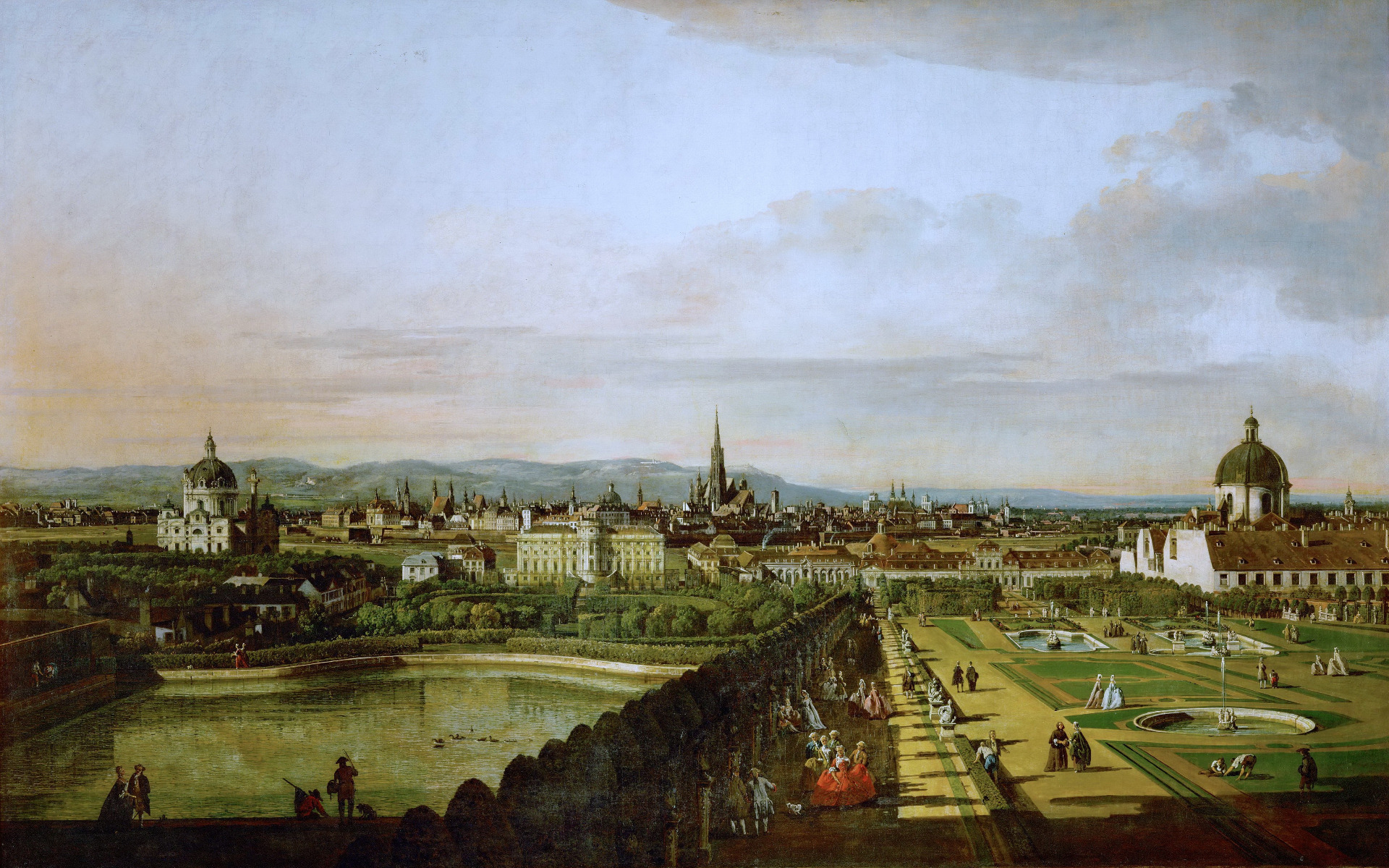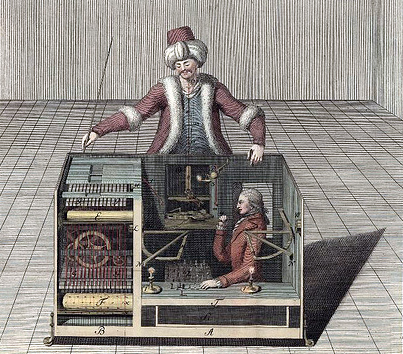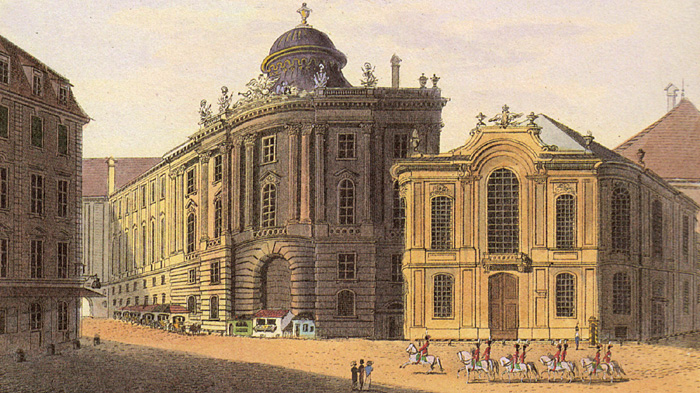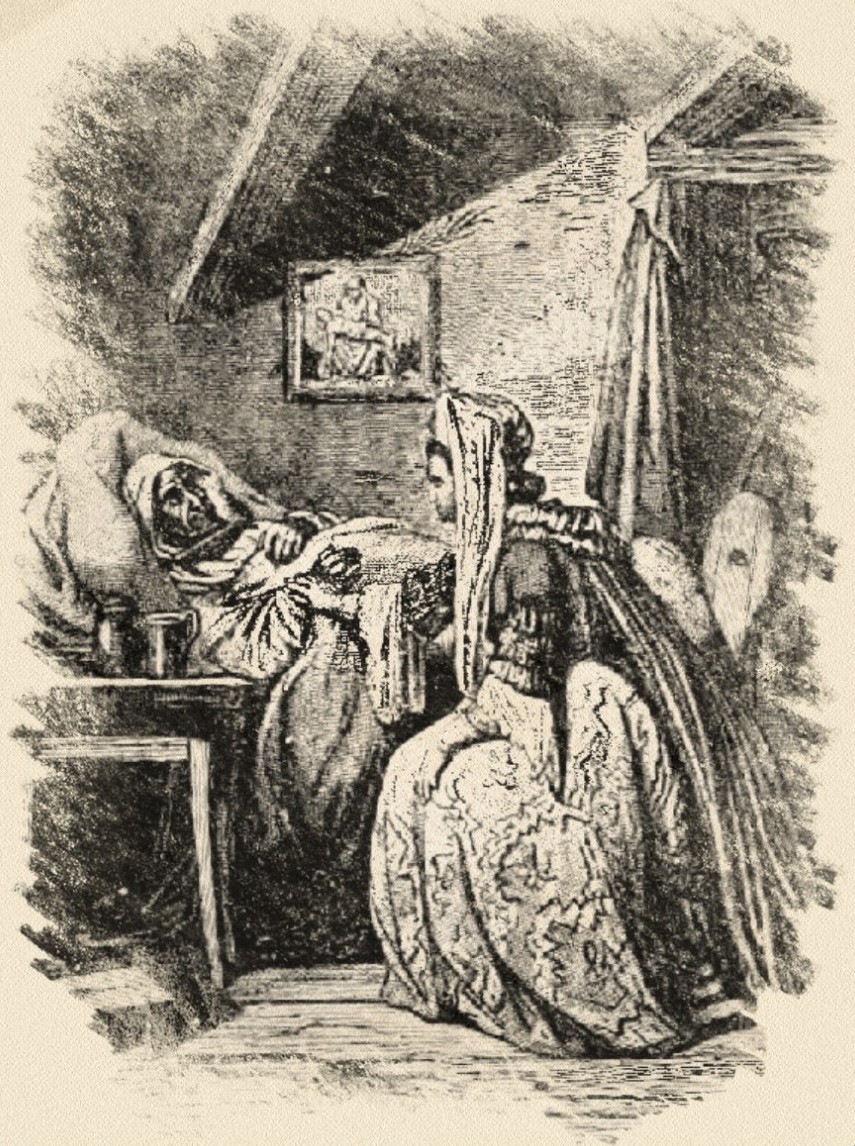First page - Vivat Maria Theresia
Second page - Archduchess Maria Theresia
Third page - The Austrian Succession War
Fourth page - The Seven Years' War
Fifth page - The Final Years
Sixth page - Topics
About Me
Previous page: The Final Years
This page: Topics
About Me
Topics

Gerard van Swieten
Maria Theresia
brought knowledgeable people to Vienna
and the Dutch physician Gerard van Swieten was definitely one of the most
important of those she recruited.
In 1745, Gerard van Swieten was appointed as the personal physician of Maria
Theresia. During the years that followed he transformed the health service and
university medical education in Austria.
In 1749, he planned the reorganisation of the faculty of medicine and was able to establish the Vienna School of Medicine that became a highly respected institution.
He was also the Director of the Imperial Library in Vienna and was President of the Censorship Committee. He reformed censorship for the judgement of literature and was responsible for the documentation and listing of books that the committee read in Supplementum Librorum Prohibitorum.
His report 'Abhandlung des Daseyns der Gespenster' (Discourse on the Existence of Ghosts) was aimed at eradicating superstition and gave a natural explanation for the belief in vampires.Vampires
Van Swieten is also known for his fight against superstition, especially vampires. There had been many reports of vampires in newly acquired parts of the realm on the Ottoman border area in the east.
Settlers had received a special status of duty-free farmers in exchange for their agricultural development and the securing of the border areas.
The reports of vampires quickly reached Vienna
and in 1755 Gerard van Swieten was sent to investigate the situation.
Van Swieten's Pail
One evening, during an evening meal with her Majesty, van Swieten
ordered a pail to be placed next to him.Maria Theresia was surprised and asked of his intensions but the physician
asked for her patience.
During the evening, whilst dining, he put the same amount of food and drink
that her majesty had consumed into the pail. Then he requested her majesty to
look into the bucket with the unsavoury mess of various foods and drinks and
said:
So sieht es jetzt in Eurer Majestät Magen aus!
"This is what it looks like in your Majesty's stomach!"
This is said to have impressed Maria Theresia more than all of the reminders to moderate her consummation.
Christoph Willibald Ritter von Gluck
Christoph Willibald Gluck was born on the 2nd July 1714 and died on the 15th November 1787.
Gluck was born in Erasbach near Neumarkt (now Bavaria). He studied music in Bohemia and Milan and created his first opera 'Artaserse' in 1741. He was able to produce more than a dozen operas during the following decade.
The composer moved to Vienna in 1750 and remained mainly in the Habsburg capital where he continued his work as a composer and wrote many more of his operas during the following years.
In 1754, Maria Theresa appointed him director of opera at the Imperial Court Theatre (K.K. Hoftheater nächst der Burg).
Gluck later began to develop a new style and was to make his reforms of
operas in the 1760s although Italian opera continued to dominate most
of Europe.
He surpassed anything he had written before with the
opera 'Orfeo ed Euridice' which was the result of his new style and many
of his new 'grand' operas followed.
His reforms met with opposition and a conflict began between those who favoured such reforms and those who preferred the Italian opera.
His reforms influenced the work of many of the coming composers such as Wolfgang Amadeus Mozart, Ludwig van Beethoven, and Richard Wagner.
Wolfgang Amadeus Mozart
Wolgang Amadeus Mozart was born in the city of Salzburg on the 27th January 1756 and was the son of music director (Kapellmeister) Leopold Mozart.
The young boy started composing when he was five and in 1762, when he was six, he gave one of his first performances together with his sister 'Nannerl' playing before the Imperial family of Austria.
The House of Habsburg and Habsburg-Lorraine
The Wedding of Archduke Joseph to Isabella of Parma Vienna 1760
The painting shows the five-day wedding of Maria Theresia's eldest son Joseph, to Isabella of Parma.
The Fortifications of Vienna

At the time of the First Ottoman Siege of Vienna in 1529, Vienna was protected by medieval walls and fortifications.
After the siege new fortifications were built and Vienna then had eleven bastions which were very decisive during the in the Second Ottoman Siege of Vienna in 1683.
After 1683, Vienna was heavily changed and was turned into a baroque city during the reign of Leopold I and Karl VI and the aristocracy started to build their own small palaces (Palais) in Vienna
18th Century Vienna

During the eighteenth century Vienna became one of Europe's cultural centres.
The (Mechanical) Turk

The Turk, (Mechanical Turk), was an eighteenth century chess-playing machine which was displayed
from approx. 1770 until its destruction by fire in 1854.
The machine itself was constructed in 1770 by Wolfgang von Kempelen to impress the Austrian Archduchess Maria Theresia,
The Turk was in reality an illusion or hoax. A very good (human) chess master sat inside the machine and operated the mechanism.
The machine won most of the games during its eighty-four years of being shown around Europe and the America, even statesmen such as Napoleon Bonaparte and Benjamin Franklin were fascinated by the mechanical device.
Saint Nicholas Day

This aquarelle was painted by Archduchess Maria Christina in 1762 and
depicts the Imperial family
in an imaginary bourgeois setting.
Maria Theresia is in the blue dress and her husband Franz Stephan is sitting at the table celebrating the feast of Saint Nicholas together with their children; Maria Christina, Ferdinand, Maria Antonia with a doll and the little Maximilian under the table.
Klosterneuburg - The Austrian Escorial

In 1730, Karl VI decided to make parts of the monastery of Klosterneuburg into his Imperial Residence and during the following years his attention was focussed on developing the monastery into an Imperial Palace.
These plans envisaged the Emperor Karl VI's Imperial
Residence becoming the 'Austrian Escoria', a huge complex with nine
domed towers each of which was to be surmounted by one of the crowns of
the House of Austria.
After the death of Karl VI in 1740 the work on
the residence was halted and little work was done until the years
between 1834 and 1842, when only a quarter of the original plan was
completed.
The origins of the Augustine monastery of Klosterneuburg in Lower Austria near to Vienna can be traced back to the Babenberg Margrave Leopold III who founded the monastery in the year 1114.
These plans envisaged the Emperor Karl VI's Imperial Residence becoming the 'Austrian Escoria', a huge complex with nine domed towers each of which was to be surmounted by one of the crowns of the House of Austria.
After the death of Karl VI in 1740 the work on the residence was halted and little work was done until the years between 1834 and 1842, when only a quarter of the original plan was completed.
The Favorita

In 1746 Maria Theresia established a noble academy in the former residence and employed Jesuits monks as teachers. After the abolition of the Jesuits, Piarists continued the work of Academy.
Belvedere Palace

Belvedere Palace in Vienna was built as a summer residence for Prince Eugène of Savoy.
In 1697, Prince Eugène purchased the land as the site for his summer residence.
The architect Johann Lukas von Hildebrandt built the baroque residence during two major building phases. The Lower Belvedere was built between 1714 and 1717 and Upper Belvedere was commenced in 1721 and was completed in 1724.The Court Theatre (Hoftheater)

She was so overjoyed that she rushed from her rooms in the Imperial Palace (Hofburg) into the upper floor of the nearby adjacent wing of the Hoftheater and leaning over the railing of the balcony during the performance, waving the piece of paper that held the message, she announced to the audience in a loud voice and Viennese dialect;
"Kinder, Kinder, der Poldl hat an Buam!"
("Children, children, Poldl has a boy!")
* Her grandson was born in Florence on the 12th February 1768 and named Franz Joseph Karl. He became the last Holy Roman Emperor Franz II, and the first Emperor of Austria, Emperor Franz I.
Laxenburg

Maria Theresia and an event that is said to have taken place in Laxenburg.

A poor one hundred and eight-year-old woman, who had never missed attending the annual ceremony of the foot-washing on Maundy Thursday, was ill and could not participate. The aged lady lamented the fact that she was not able to see her Empress.
Maria Theresia was very touched when she was told of this and decided to go to the old lady's home.
As she entered the poor surroundings of the elderly lady's home, she seated herself at her sick-bed and, with a smile on her face, spoke to the bedridden woman in a tender and considerate manner and said, "You were grieving because you could not see me? Be comforted my good woman for I have come to see you."
Maria Theresia stayed at her bedside and spoke to the overjoyed woman for some time and before leaving she gave a sum of money (Maudy) to make sure the old woman would be cared for thereafter.
The Neugebäude

The Neugebäude (New Building), on the outskirts of Vienna was commissioned in 1568 by Emperor Maximilian II.
Maximilian died in 1576 before the Palace was completed and left a large building site for his successor Rudolf II to finish, but Rudolph left Vienna to live in Prague. The history of the Neugebäude was of short duration and it soon began to decay so that by the middle of the 17th century the complex of buildings, Menagerie (Zoo) and gardens had already lost the majority of their former beauty.
In 1607, the Menagerie was extended, but in 1704 the Hungarian so-called "Kurucs" rebels devastated the complex.
The Palace and the Menagerie were slowly rebuilt, but little was done to make the Palace into a possible future Imperial Residence.
In 1752, Maria Theresia decided to transfer the animal stock of the old Menagerie to the newly built Menagerie at Schönbrunn.
In 1775, all of the useable ornamental parts of the Neugebäude Palace were removed and reused for the decorations of the Gloriette and the Roman Ruins of Schönbrunn.
Since 1775, the old residence has decayed and many plans to restore the Neugebäude have long been abandoned. Today only a square courtyard surrounded by fortified walls topped by towers, and the remains of what was the main building of the original Renaissance Palace still stand.
The Gloriette

The Gloriette was built to commemorate the Austrian Succession War of 1740-1748,
and the Seven Years War of 1756-1763.
Before any building took place, this area was part of the Katterburg Estate in the Vienna Woods, a wooded hill called the 'Gatterholz'.
Maria
Theresia commissioned architect Johann Ferdinand von Hohenberg to build
a monument on the top of the hill that would crown the baroque gardens
of Schönbrunn, and ordered him to use parts of the old 17th century
Renaissance palace 'the Neugebäude' near Kaiserebersdorf for the
building of the Gloriette.
The building was used as a dining room and for festivities as well as being a breakfast Pavilion for the Imperial family.
After 1910, the glazing was not renewed and the middle section was completely open for decades.
New windows were mounted in the course of the restoration work at the beginning of the 1990s.
Schönbrunn Palace

In 1688 Fischer von Erlach presented Emperor Leopold I with the first plans for a new residence
and building commenced in 1696.
Emperor Joseph I was the first Emperor to live in what is now regarded as the central west wing of the building.
Emperor Karl VI made over the (Schönbrunn) estate to his daughter Maria Theresia. She was very fond of Schönbrunn and preferred it to any of her other residences.
Her father had moved his interests to the monastery of Klosterneuburg and during the following years he concentrated on the adaptations needed to convert parts of the Gothic monastery into a second, when not complete, 'Austrian Escorial.
In 1740, Maria Theresia appointed Nikolaus Pacassi to the position of Court architect and extensive changes to Schönbrunn were undertaken. The main floor was restored and refurbished for the nobility and was referred to as the 'Noble Floor' (Nobelétage).
In 1746 the face of Schönbrunn was slowly changing. The 'Rampe' (ramp) that gave access to the Nobelétage was removed and replaced with a smaller, more delicate Rococo exterior staircase.
The Great Gallery and a smaller more intimate Gallery formed the centre of the main floor, and the former dining room (Kleiner Saal) was made into a staircase (Blue Staircase).
Pacassi was obliged to extend his plans to accommodate the ever increasing size of the Imperial family and a "new" floor was inserted between the first and second floors to serve as the apartments and rooms for the use of the Imperial Court. The side wings of the palace were adjoined to the outbuildings along the side of the courtyard.
A large number of outbuildings were built to accommodate high-ranking officers, servants and staff.
Schönbrunn had become an Imperial Residence.




